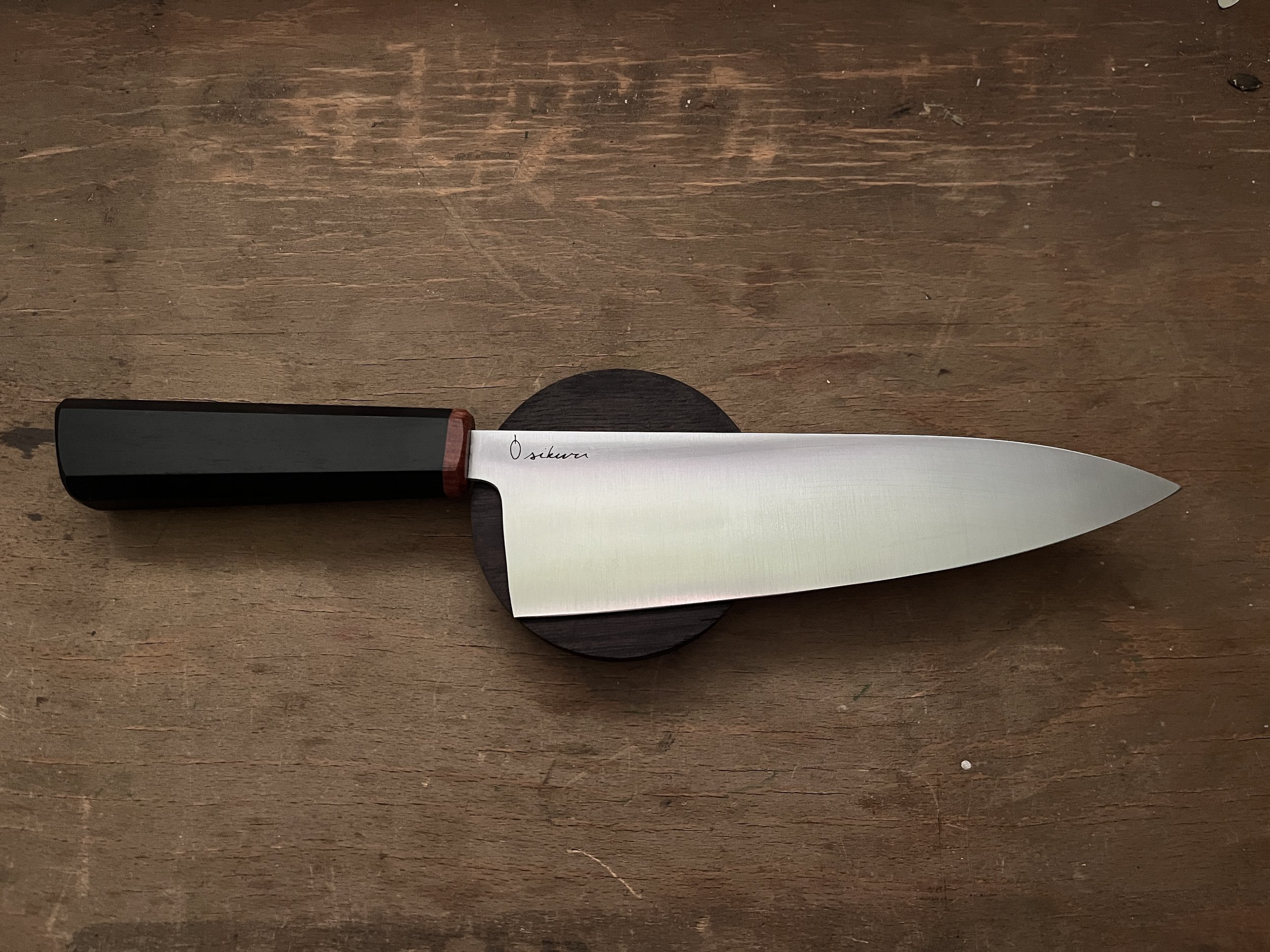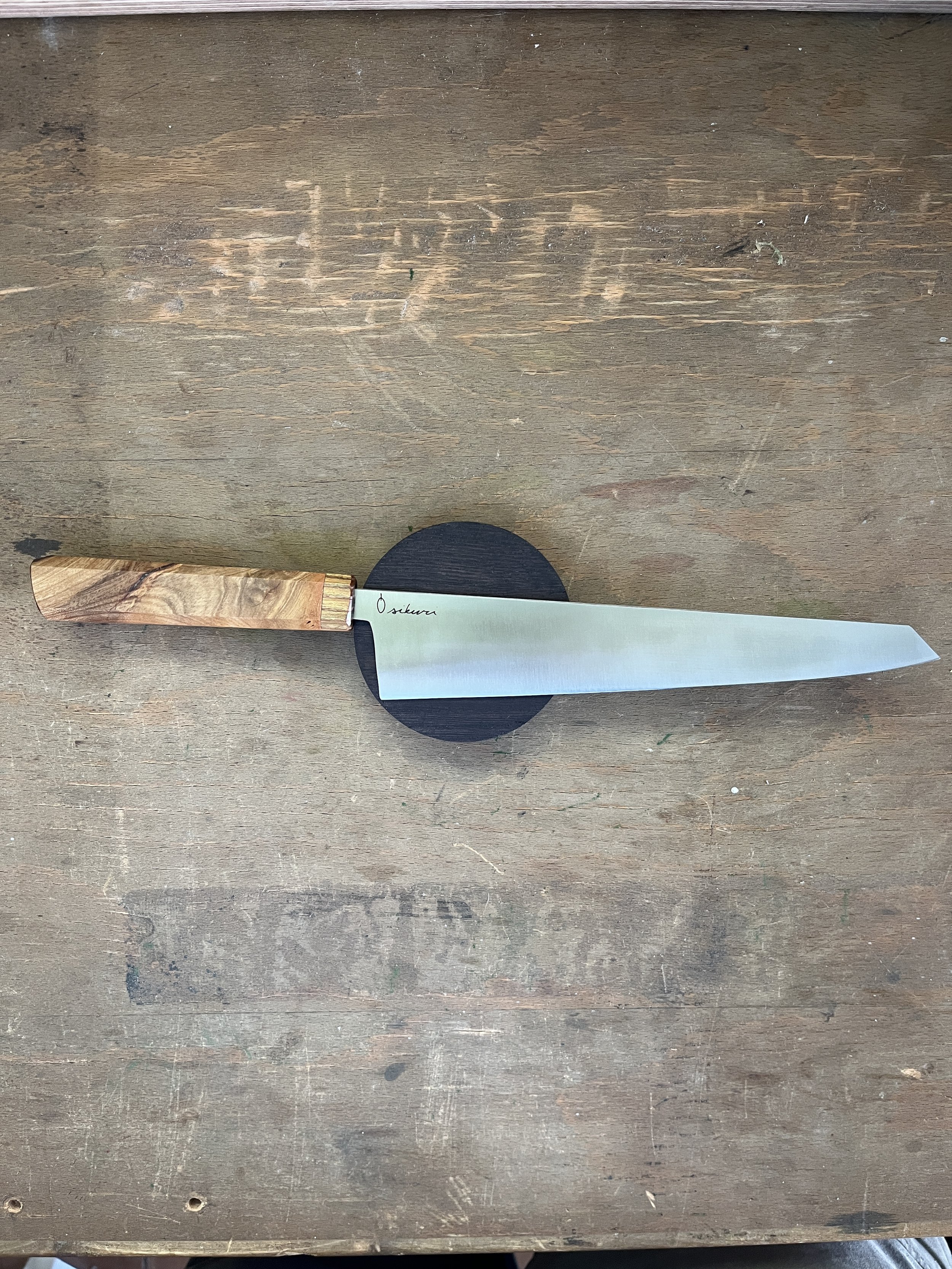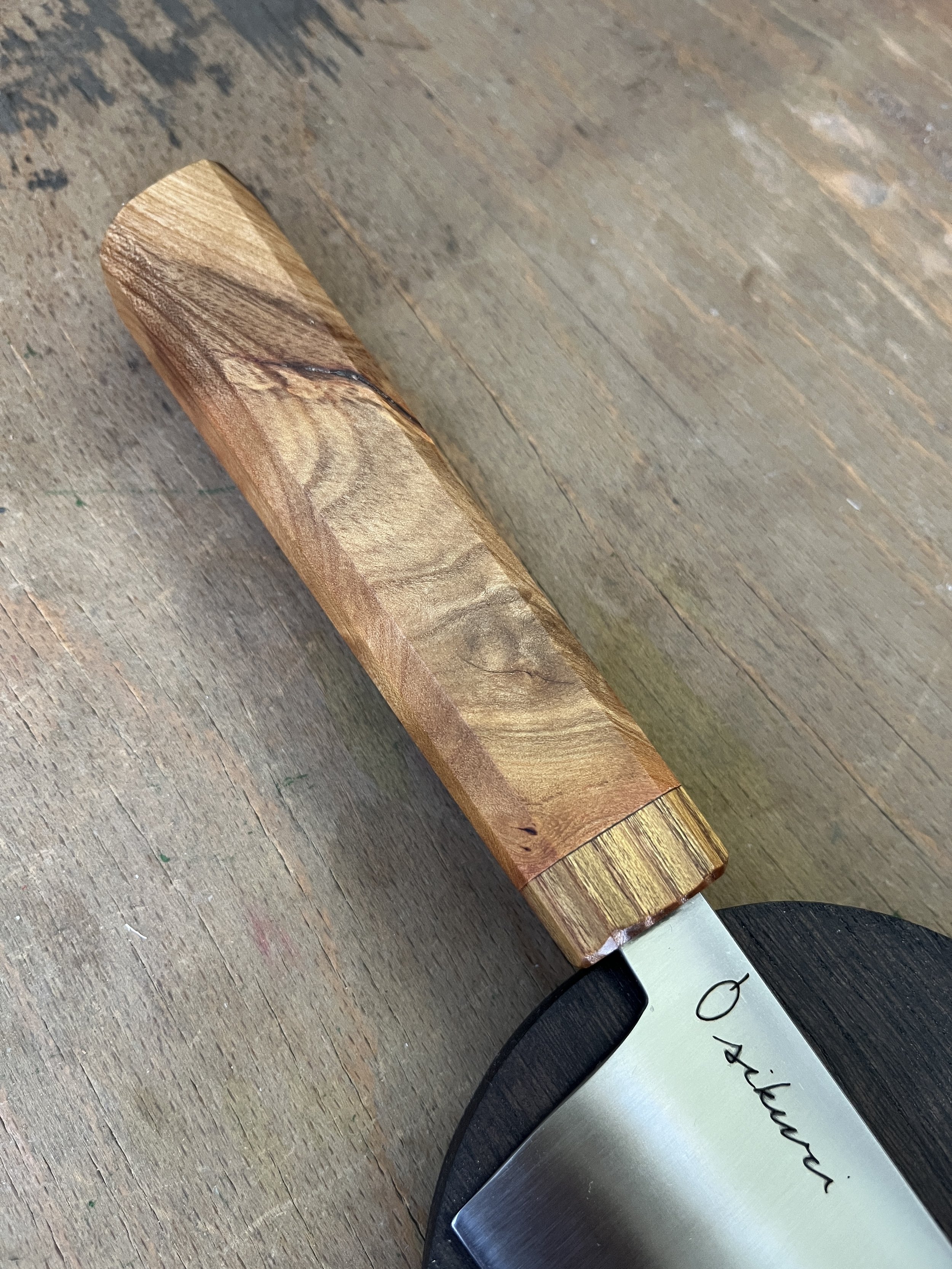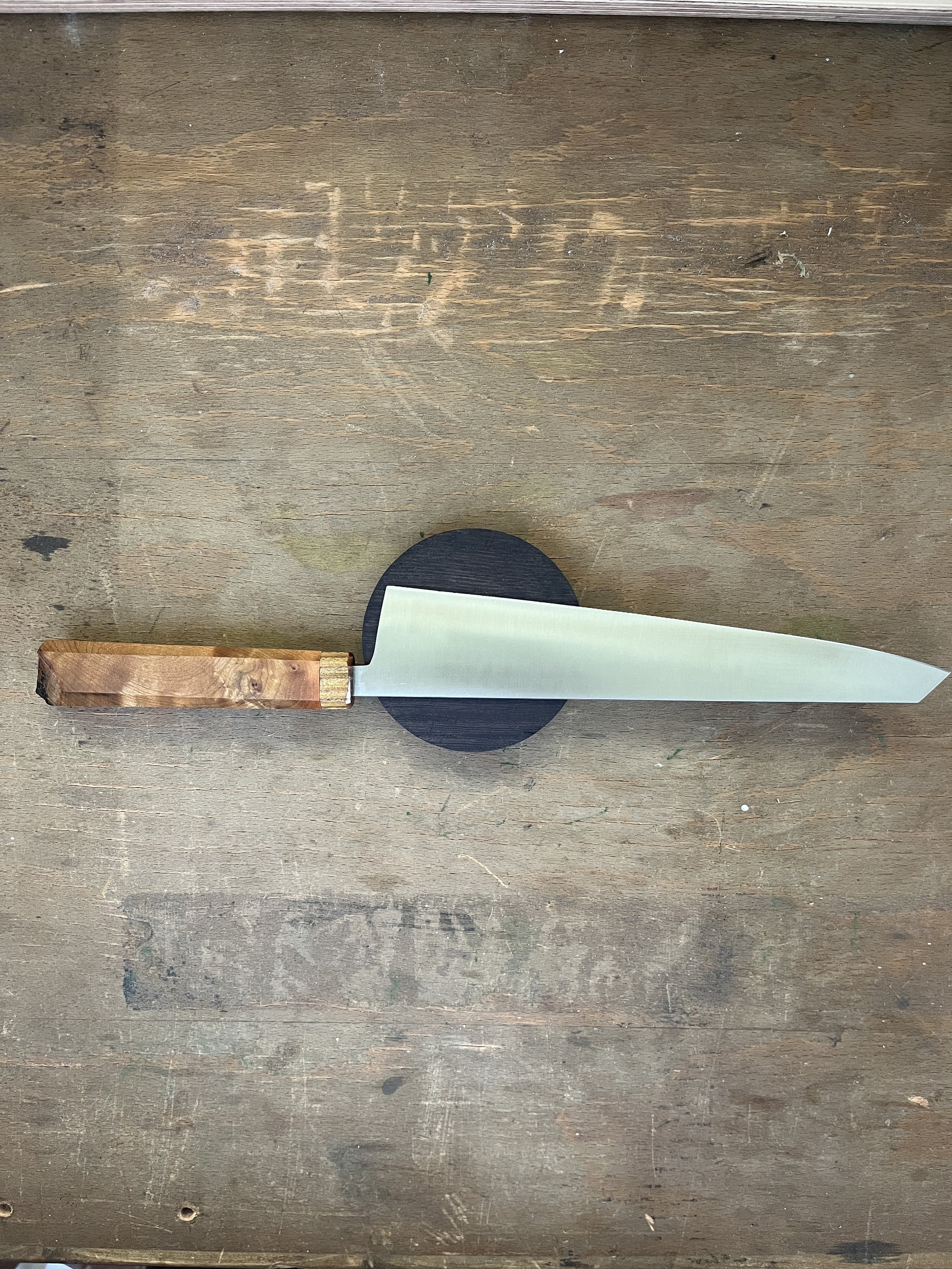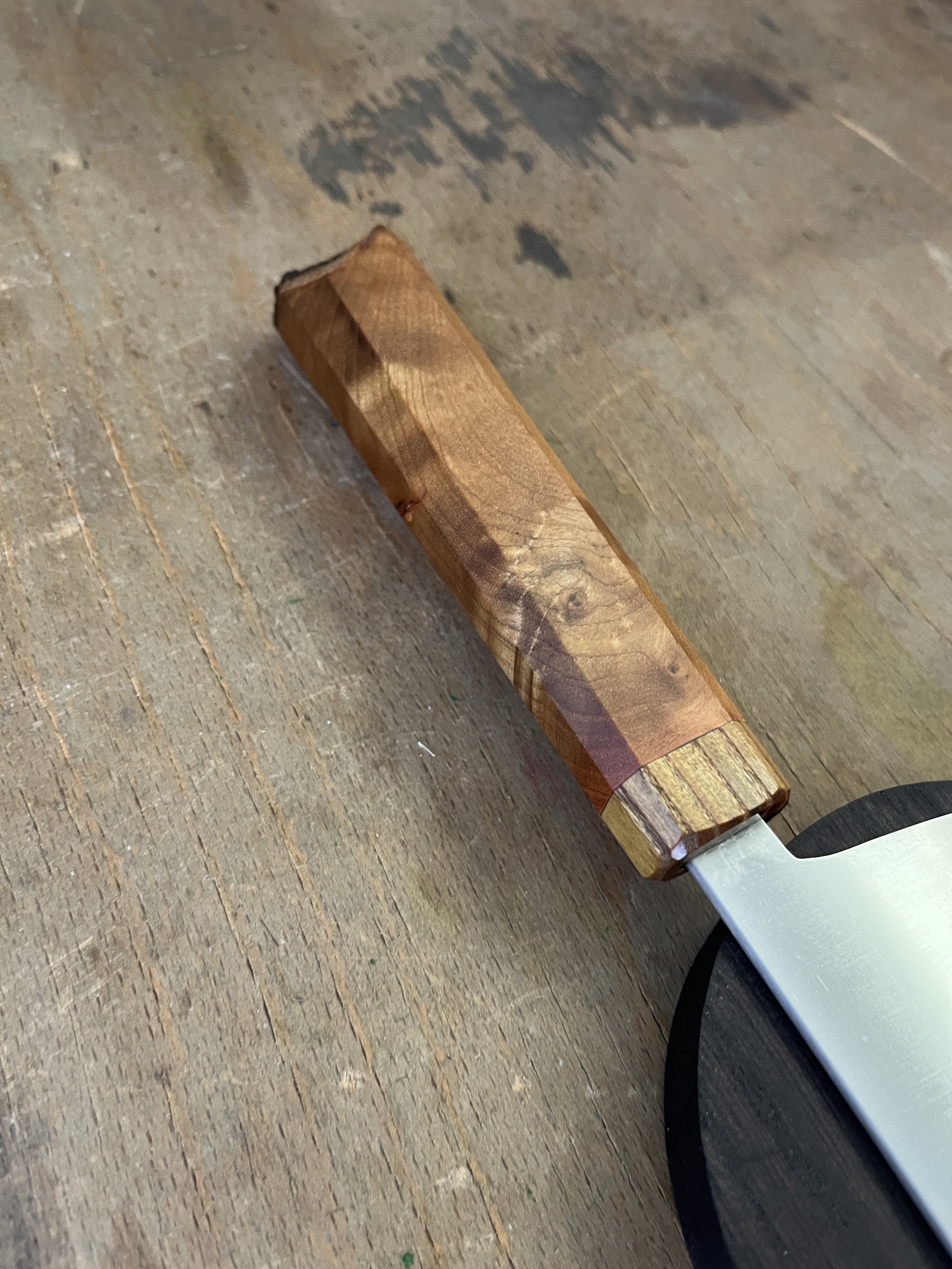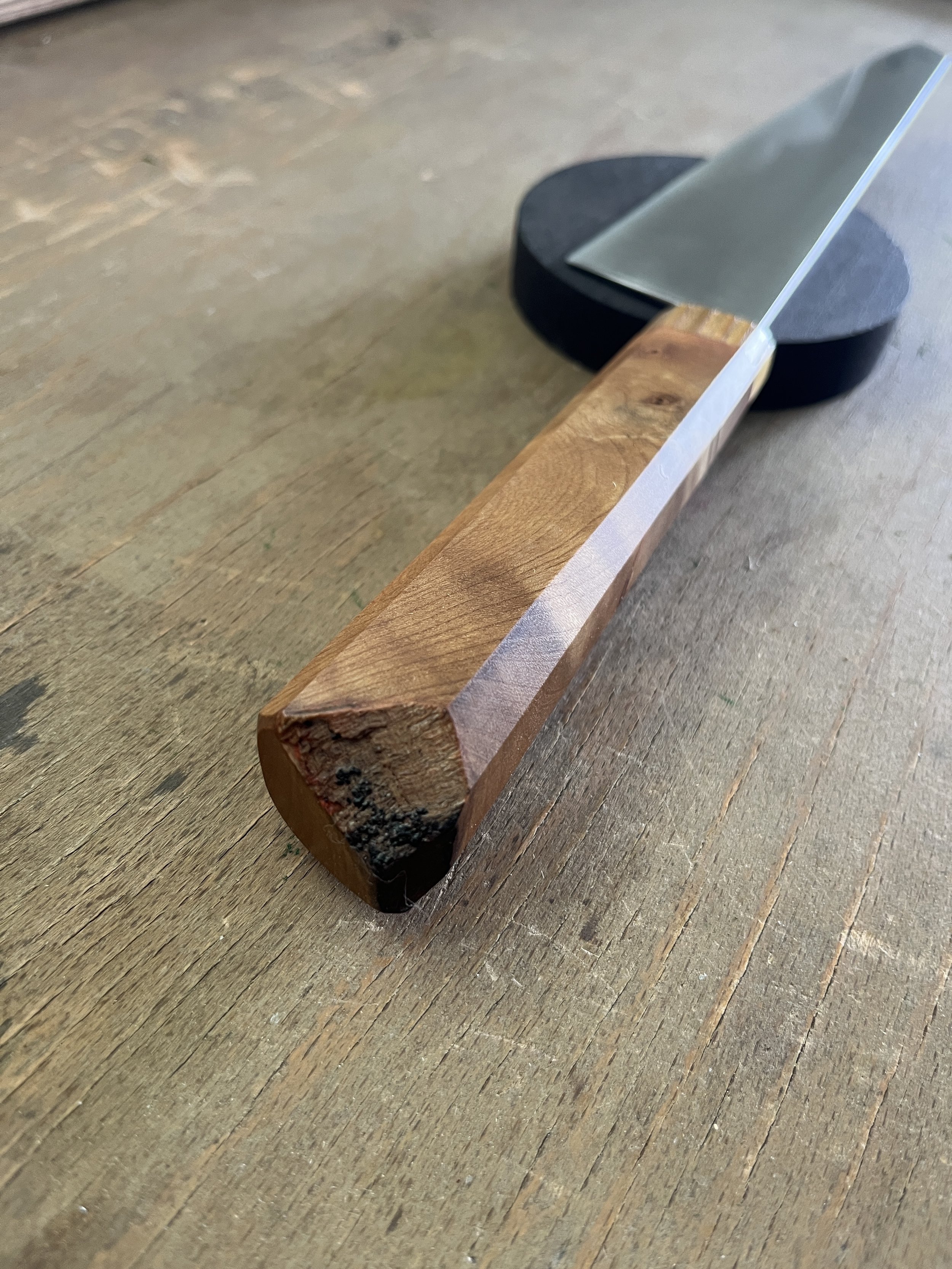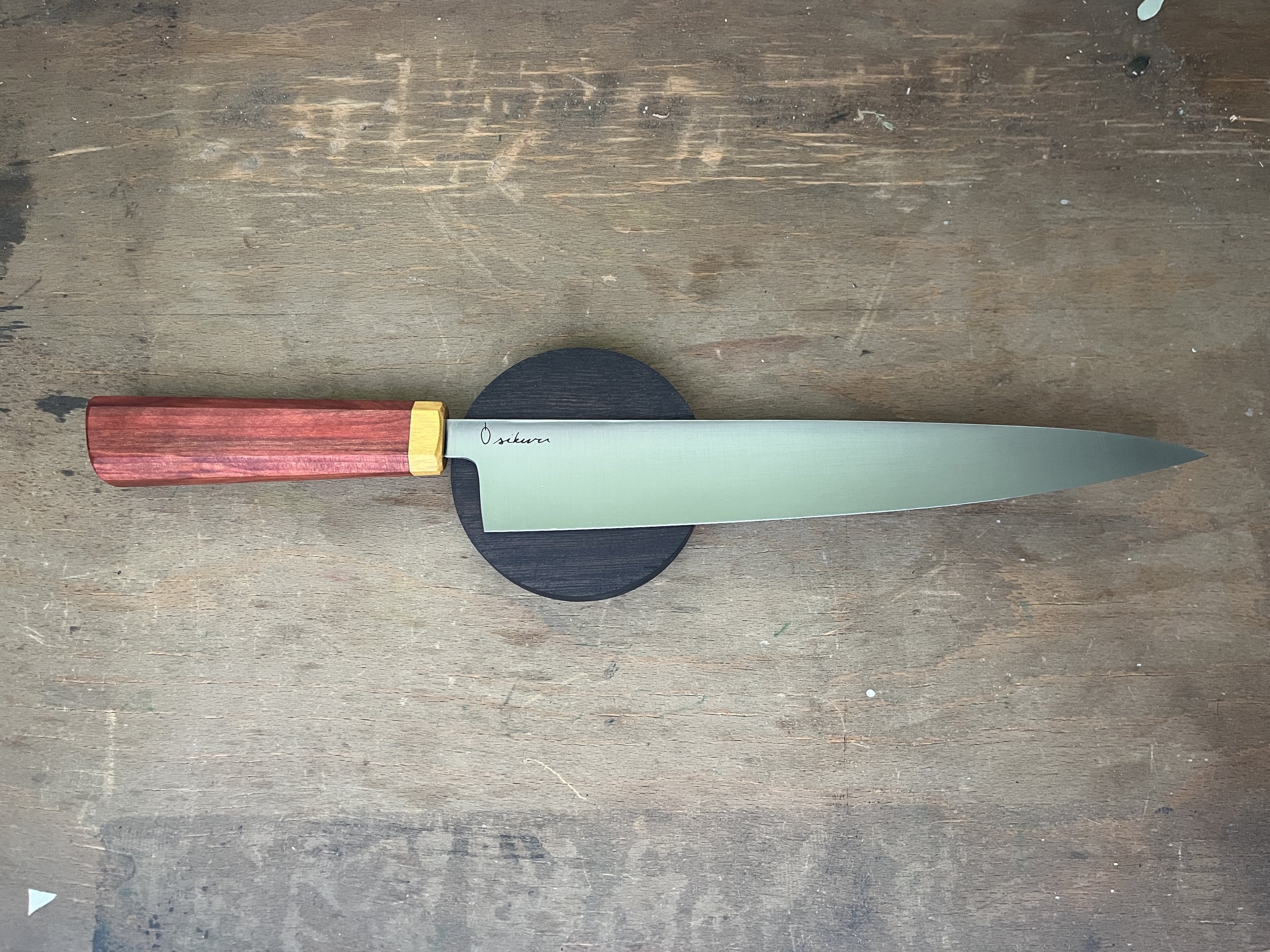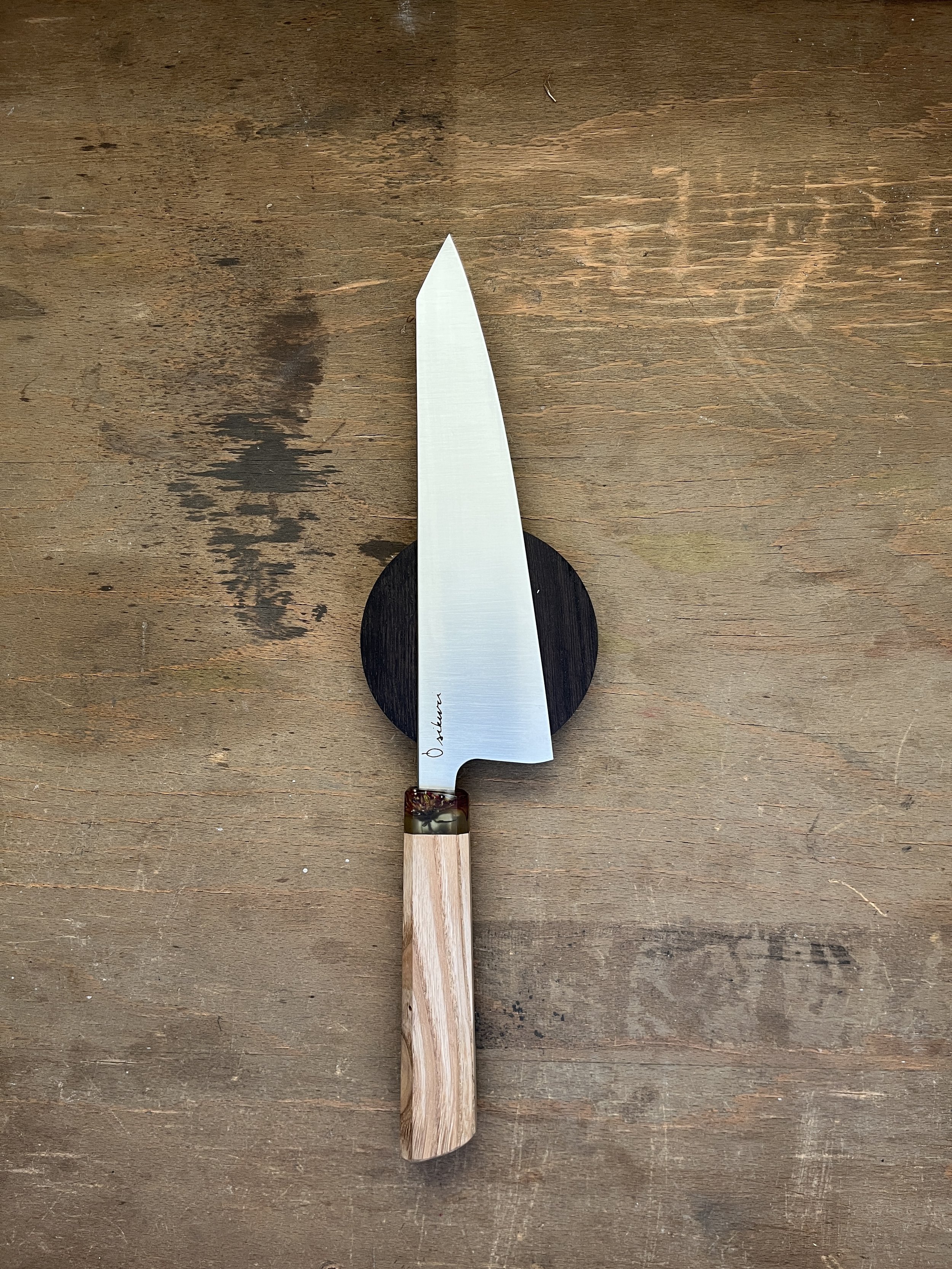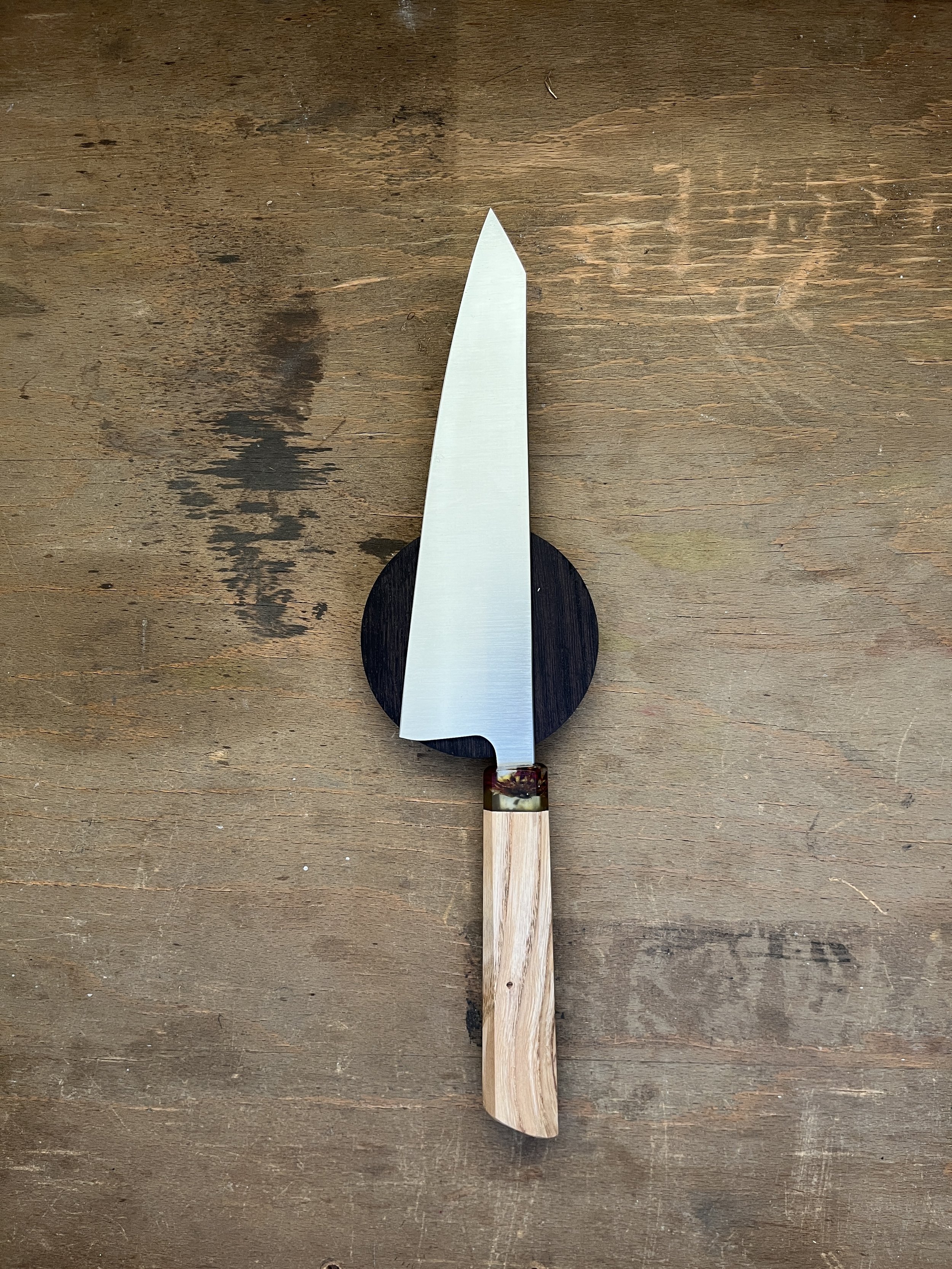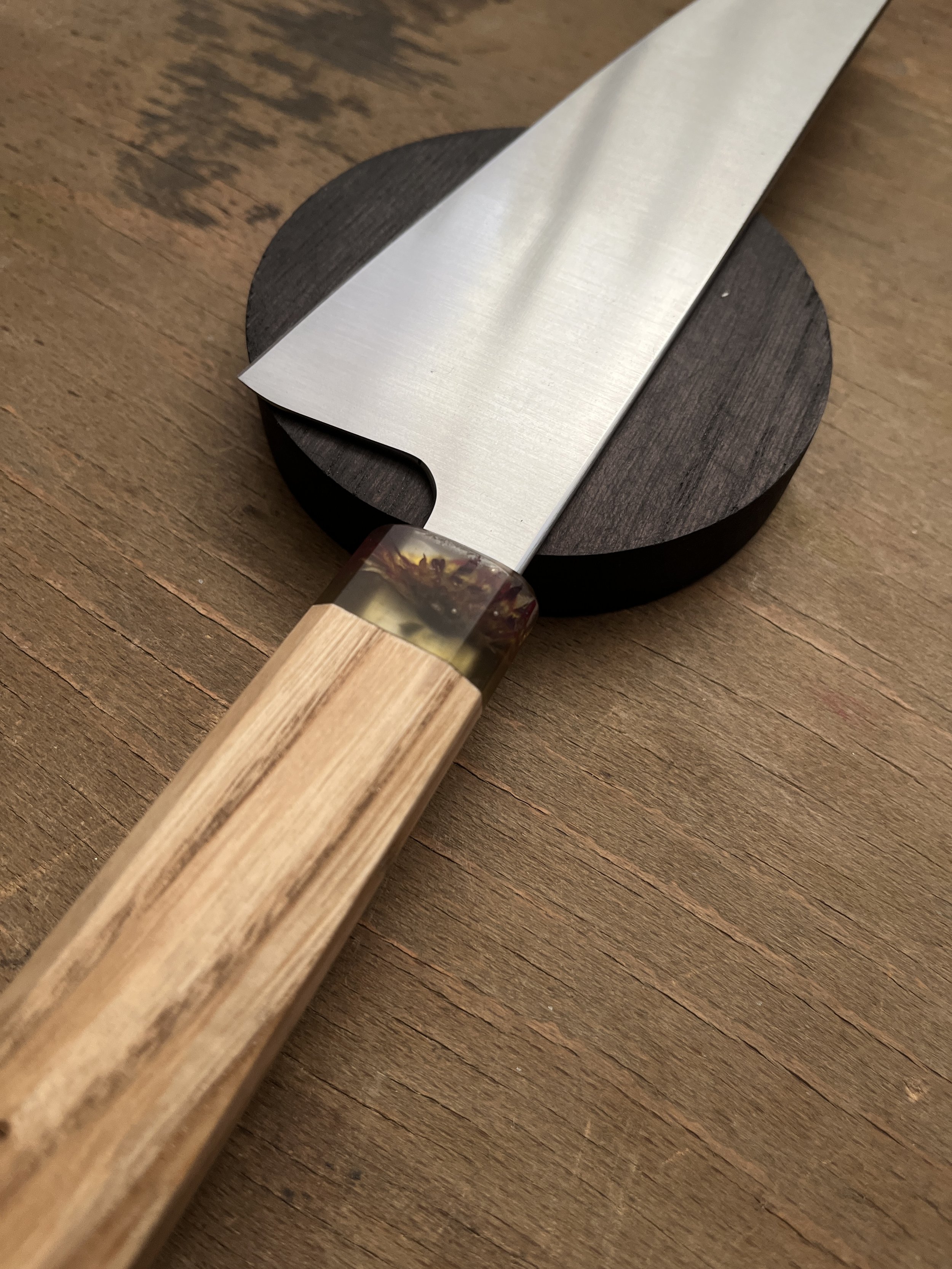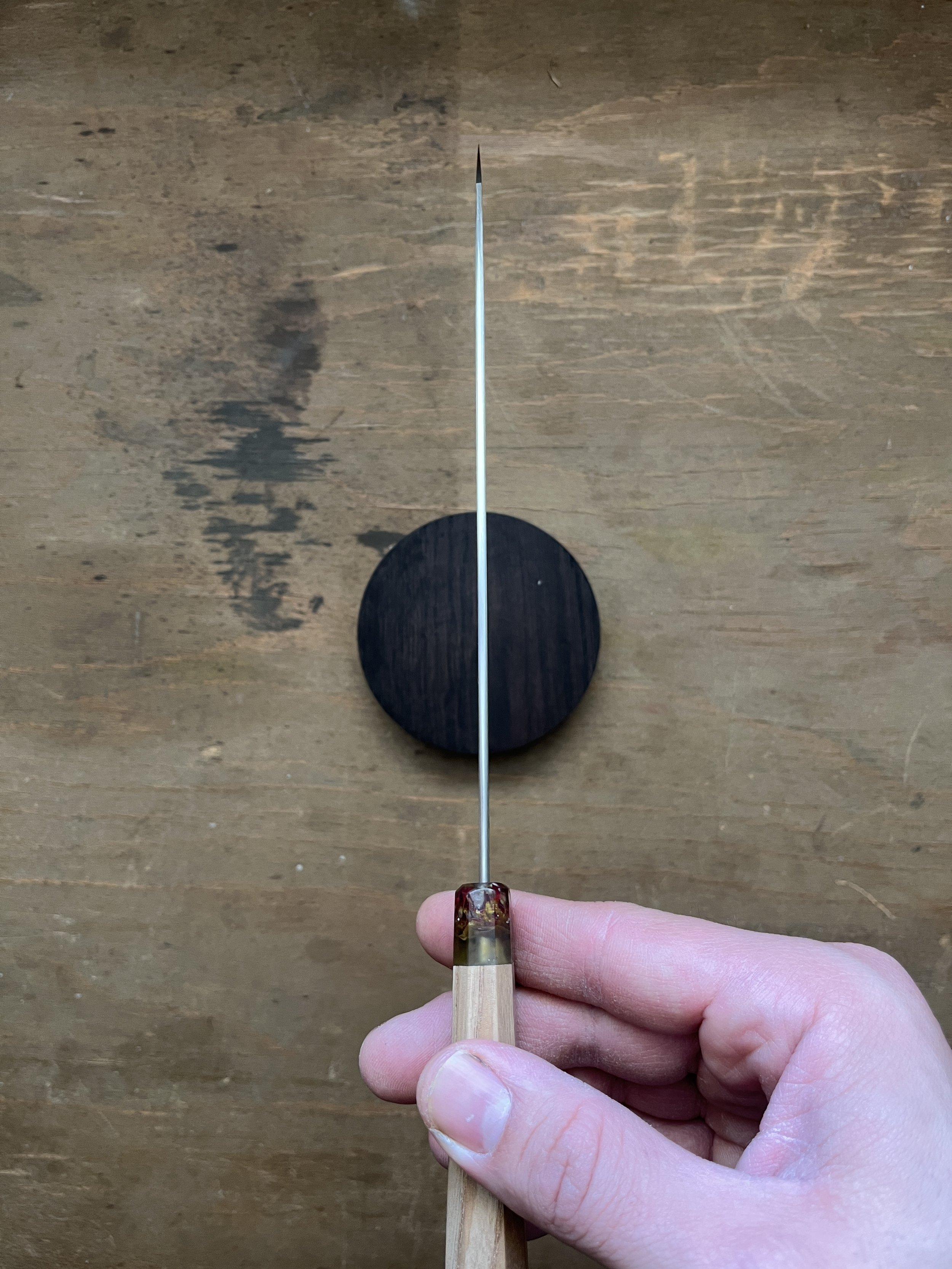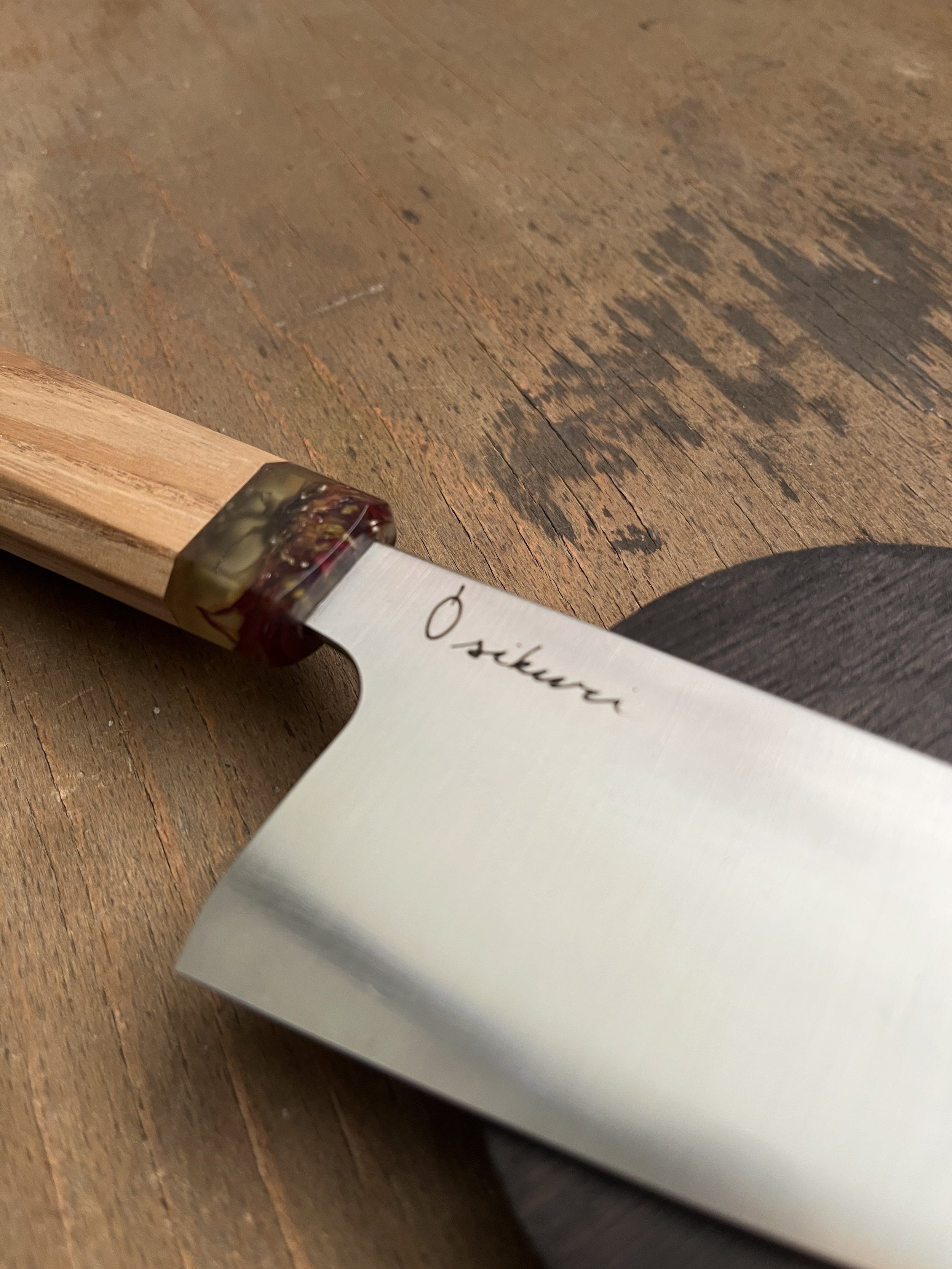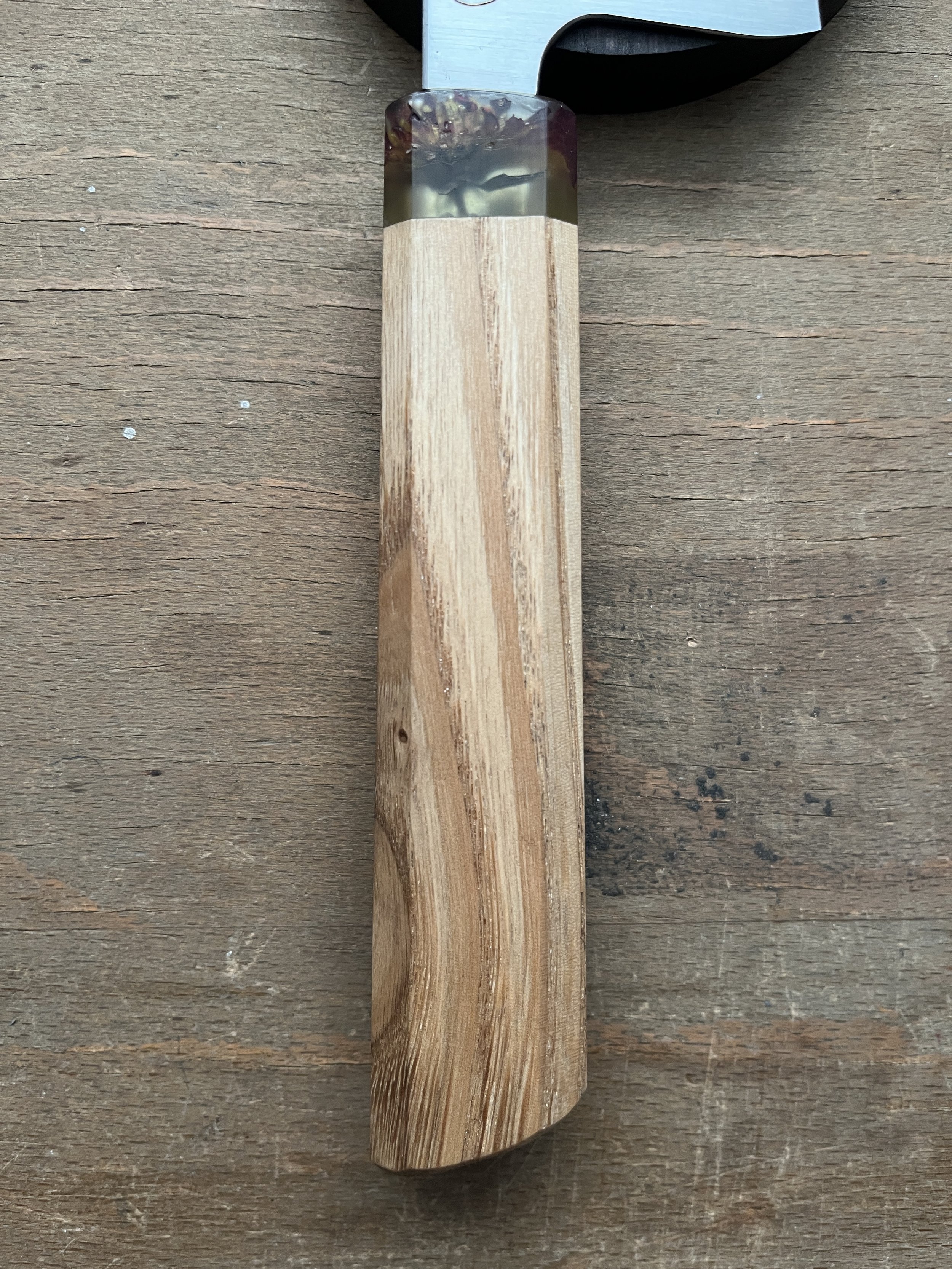 Image 1 of 5
Image 1 of 5

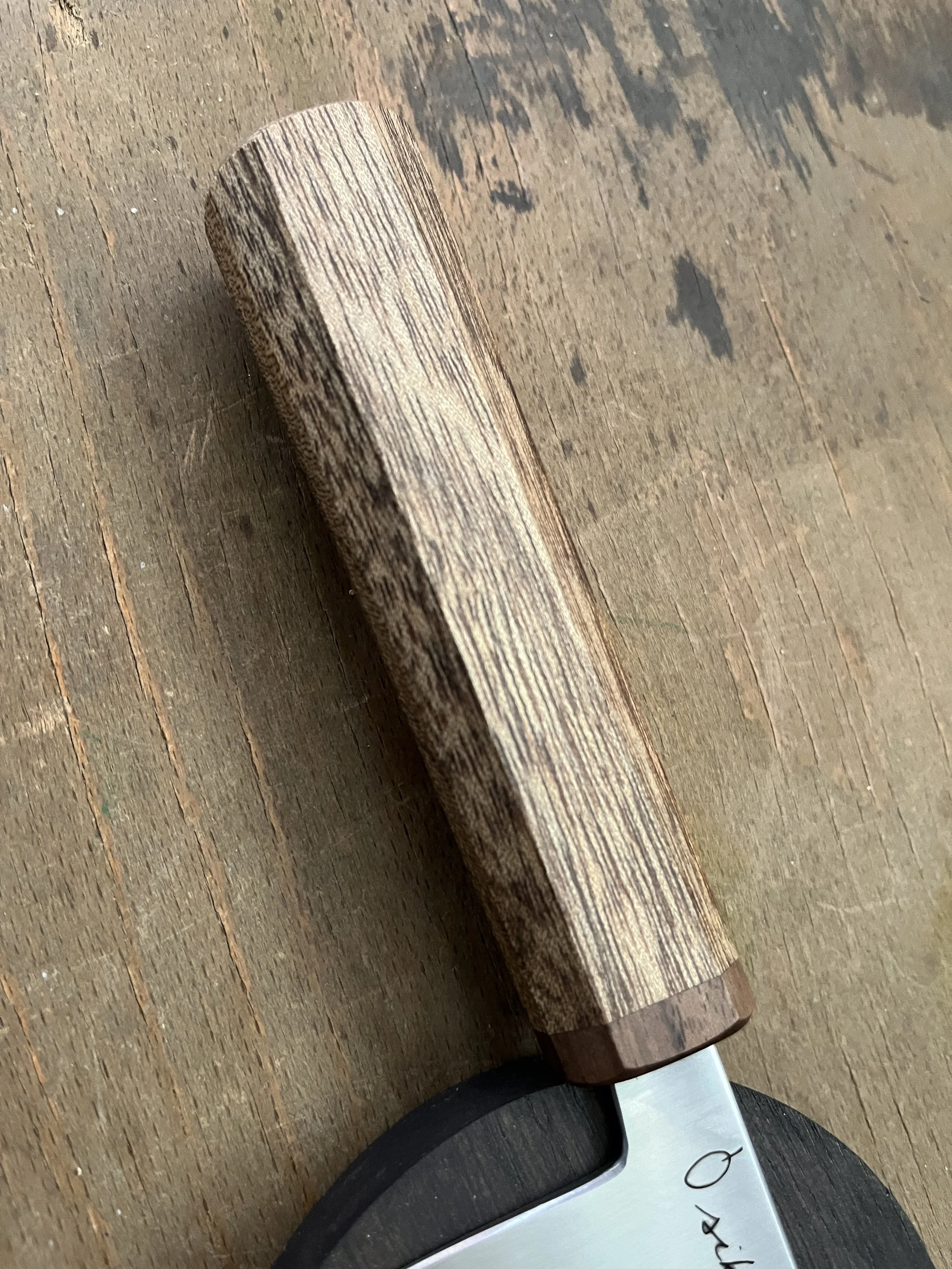 Image 2 of 5
Image 2 of 5

 Image 3 of 5
Image 3 of 5

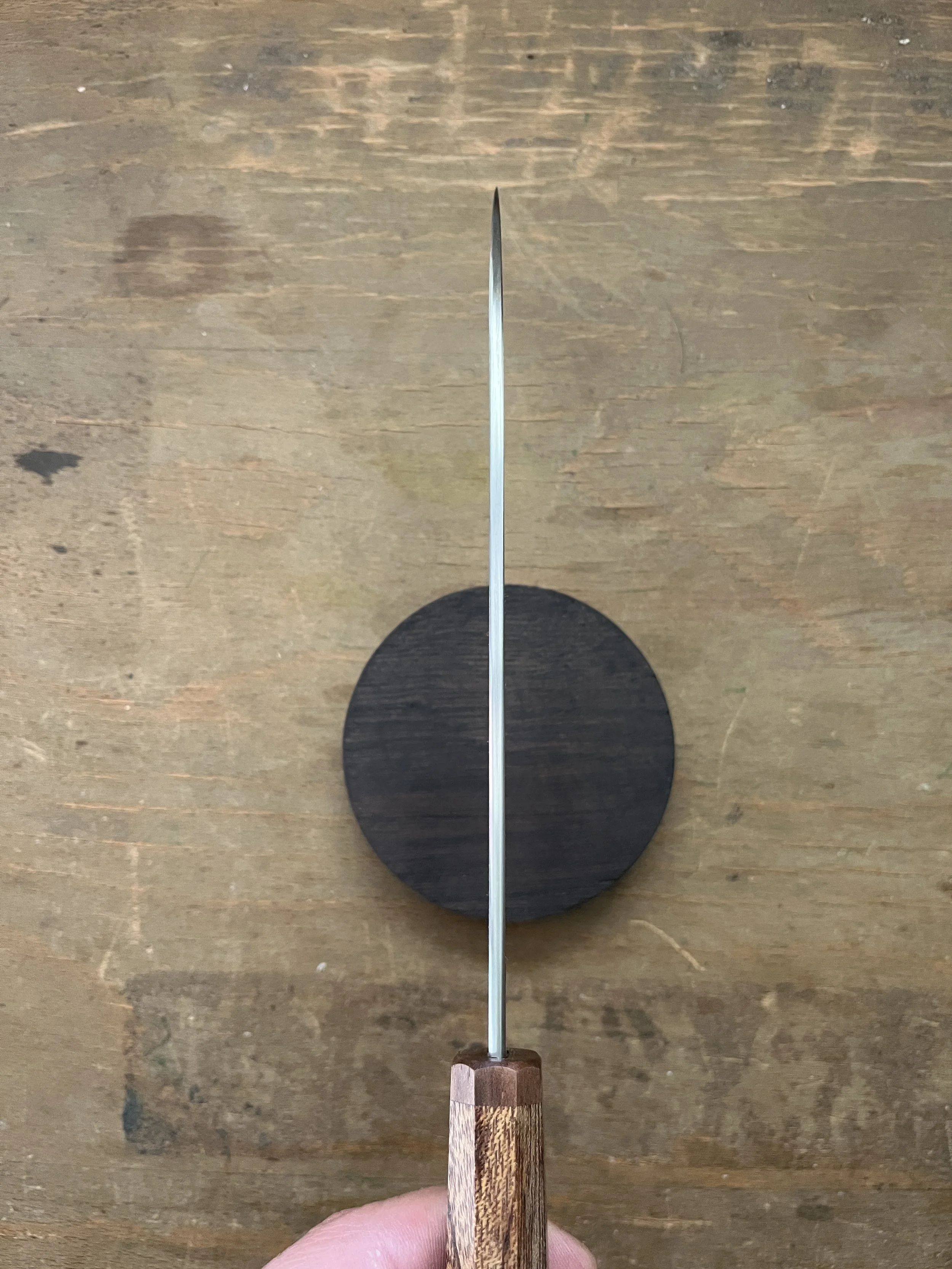 Image 4 of 5
Image 4 of 5

 Image 5 of 5
Image 5 of 5






Santoku 185 mm stainless with Wa Handle
Chef kitchen knife made from Alleima 14C28N stainless steel.
Handle made from stabilised mahogany and walnut.
Steel: Alleima 14c28n stainless steel, saten finish
Hardness: 60 HRc (with cryogenic treatment)
Blade lenght: 185 mm
Blade thicknes: 3.0 mm
Height of the blade: 57 mm
Weight: 172 g
Handle material: Stabilised mahogany and walnut.
This mahogany once sheltered our home. My father built the roof with it over forty years ago, when the wood arrived by ship to Luka Koper. Decades of sun, salt air, and rain left their mark on every fibre. When the roof was replaced, I saved a few pieces — worn, rich with time — and gave them new life in the workshop.
It’s more than wood; it’s a memory, shaped by hands from two generations.
Every knife is handmade with great care in Slovenia.
A Santoku is a Japanese-style all-purpose kitchen knife, known for its balanced shape and versatility. Its name means “three virtues,” referring to its skill in slicing, dicing, and chopping. The blade is typically shorter and wider than a chef’s knife, with a flat edge and a gentle sheep’s-foot tip — ideal for precise cuts and a smooth, rhythmic chopping motion.
Chef kitchen knife made from Alleima 14C28N stainless steel.
Handle made from stabilised mahogany and walnut.
Steel: Alleima 14c28n stainless steel, saten finish
Hardness: 60 HRc (with cryogenic treatment)
Blade lenght: 185 mm
Blade thicknes: 3.0 mm
Height of the blade: 57 mm
Weight: 172 g
Handle material: Stabilised mahogany and walnut.
This mahogany once sheltered our home. My father built the roof with it over forty years ago, when the wood arrived by ship to Luka Koper. Decades of sun, salt air, and rain left their mark on every fibre. When the roof was replaced, I saved a few pieces — worn, rich with time — and gave them new life in the workshop.
It’s more than wood; it’s a memory, shaped by hands from two generations.
Every knife is handmade with great care in Slovenia.
A Santoku is a Japanese-style all-purpose kitchen knife, known for its balanced shape and versatility. Its name means “three virtues,” referring to its skill in slicing, dicing, and chopping. The blade is typically shorter and wider than a chef’s knife, with a flat edge and a gentle sheep’s-foot tip — ideal for precise cuts and a smooth, rhythmic chopping motion.


